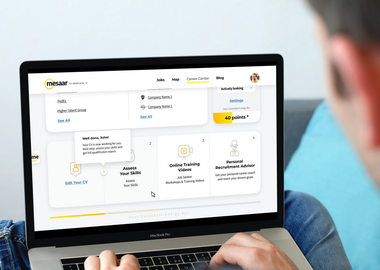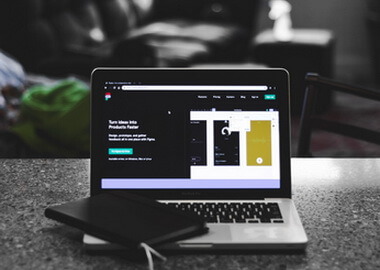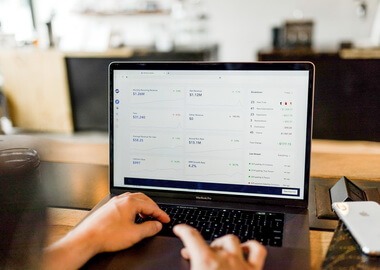How to Build a SaaS Application: Your Go-To Development Guide
Your approach to SaaS application development will determine how fast you can get your product out the door and how much it will cost you. Think of it as one of the pillars for the success of your SaaS. It’s just as important as finding your product-market fit, creating a tailored product roadmap, and deciding on your monetization strategy.
In this post, you will walk through the step-by-step process of building a scalable SaaS application and learn:
- Why SaaS application is different from other types of software and how this affects your development approach.
- How to build a SaaS application while keeping focus on your budget, delivery goals, and competitive advantage.
- What challenges to expect and how to address them.
- How to estimate the cost of your SaaS project.
Let’s go through the fundamentals of SaaS to make sure we are on the same page. If you have been working with SaaS for a while and are familiar with the specifics of this model, go ahead and skip right to the step-by-step SaaS development guide.
What is SaaS and how is it different from other software?
SaaS (software as a service) is a cloud-based software delivered on demand, usually on a subscription basis. Instead of installing it locally on your device, you access SaaS online via a web browser. Anytime, anywhere.
It is convenient and usually more affordable than buying licensed products thanks to flexible software as a service monetization models such as yearly or monthly subscriptions, pay-as-you-go or tiered pricing, freemium, etc. This explains the mind-blowing yearly growth (18%) and proliferation of SaaS. Anything you do — there’s a SaaS application for that. Or at least someone building SaaS applications for that.
Common types of SaaS applications
Fun fact: An average department across enterprise and SMBs uses 87 SaaS. Slack, Zoom, and Dropbox are some of the most common examples. But there are plenty of other thriving applications that cemented their leadership in different niches and domains.
- Customer relationship management (CRM) software like Salesforce and HubSpot.
- Project management tools like Asana or Trello.
- Collaboration and communication platforms like Slack or Twilio.
- Enterprise resource planning (ERP) solutions like Microsoft Dynamic 365 or Oracle NetSuite.
- Vertical SaaS for specific industries or tasks like Samsara in logistics or Cohere Health in healthcare.
Your niche and existing market landscape will impact the decisions you will make during SaaS platform development. Here are the other key technical and non-technical aspects of SaaS that you have to consider before starting your project.
Specifics of SaaS that impact your development strategy
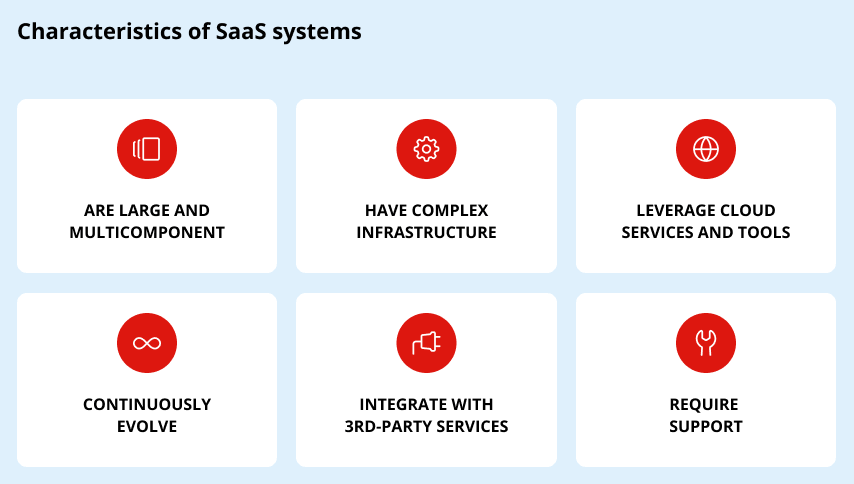
- Time to market. Unless you are carving a niche of your own, you will probably go neck to neck with competitors to get to the market first. Or try to enter the domain that already has SaaS companies sitting comfortably there for 5-10 years. Either way, you will have to factor in time to market when setting your delivery goals, prioritizing features, and building your SaaS development roadmap.
- Evolution and scalability. SaaS are usually built for growth. To stay relevant and competitive, SaaS products constantly evolve, add new features and modules, and expand to new markets. Your goal is to choose the architecture and technology stack that will sustain continuous change and seamlessly scale as your audience grows.
- Security and compliance. This is an intricate challenge, but you will have to sort it out. 78% of organizations store sensitive data in SaaS applications. At a bare minimum, you will handle the personal data of your customers, so GDPR, CCPA, PIPEDA, Data Protection Act, or similar regulations may apply, depending on the region. This will determine your choice of technologies and how and where you will store your data.
- Focus on the customer from day one. What unites all successful SaaS companies? Low customer churn and long lifetime value. To create the software as a service that retains customers and caters to their needs, you will put a lot of effort into understanding your audience and building an engaging user experience. It will impact your performance requirements, choice and prioritization of features, and design approach. And it’s worth the effort.
Increasing customer retention by only 5% can boost your revenue by 25-95%, according to HubSpot.
Now that we’ve covered the basics, let’s move straight to the process of developing a SaaS app step by step.
Note: We will walk you through the common SaaS app development process from A to Z. However, depending on the current stage of your product, your industry, and your goals, your own journey may branch out into extra steps. Or you may skip some steps if you plan to migrate your existing application to a SaaS model.
Research and discovery
You may have figured out your product-market fit, have a solid business model in mind, and a top-tier marketing squad to prepare for your launch. But you will still have to start with research and discovery. At this stage, you gather everything you can to understand how to build a cloud-based SaaS application that will be relevant to your target audience and your market.
- User research. Gather information about your potential users, their goals, expectations, requirements, preferences, behavioral patterns, frustrations, challenges, and pain points.
- Competitor analysis. Analyze your competitor landscape and existing solutions in your niche to identify business practices, monetization strategies, successful use cases, common features and value propositions, as well as gaps and untapped opportunities.
- Market research. Study your market and niche to discover the best practices, regulations, tools, technologies, third-party solutions, and integration options commonly used in your domain.
- Requirements. Based on your findings, you can put together the list of requirements and features for the first version of your SaaS and define your competitive advantage that will help you win the market.
- Technology and infrastructure analysis. Analyze functional (features) and non-functional (performance, scalability, etc.) requirements to choose technology stack, integrations and third-party services, infrastructure solutions, cloud platform, and architectural approach.
- Feature prioritization and product roadmap. Document and prioritize requirements to define an optimal project scope for your SaaS MVP and draft a product roadmap for the evolution of your SaaS over time.
Seems like a lot. That’s because discovery is usually not a one-person job. It requires diverse tech expertise and business analysis skills to conduct profound research and get well-documented requirements and a strategic product roadmap.
Unless you have this expertise in-house, you can hire a tech partner to help you conduct the discovery phase and remove guesswork from your project. Your tech partner will also prepare a detailed cost estimate and development plan for your SaaS.
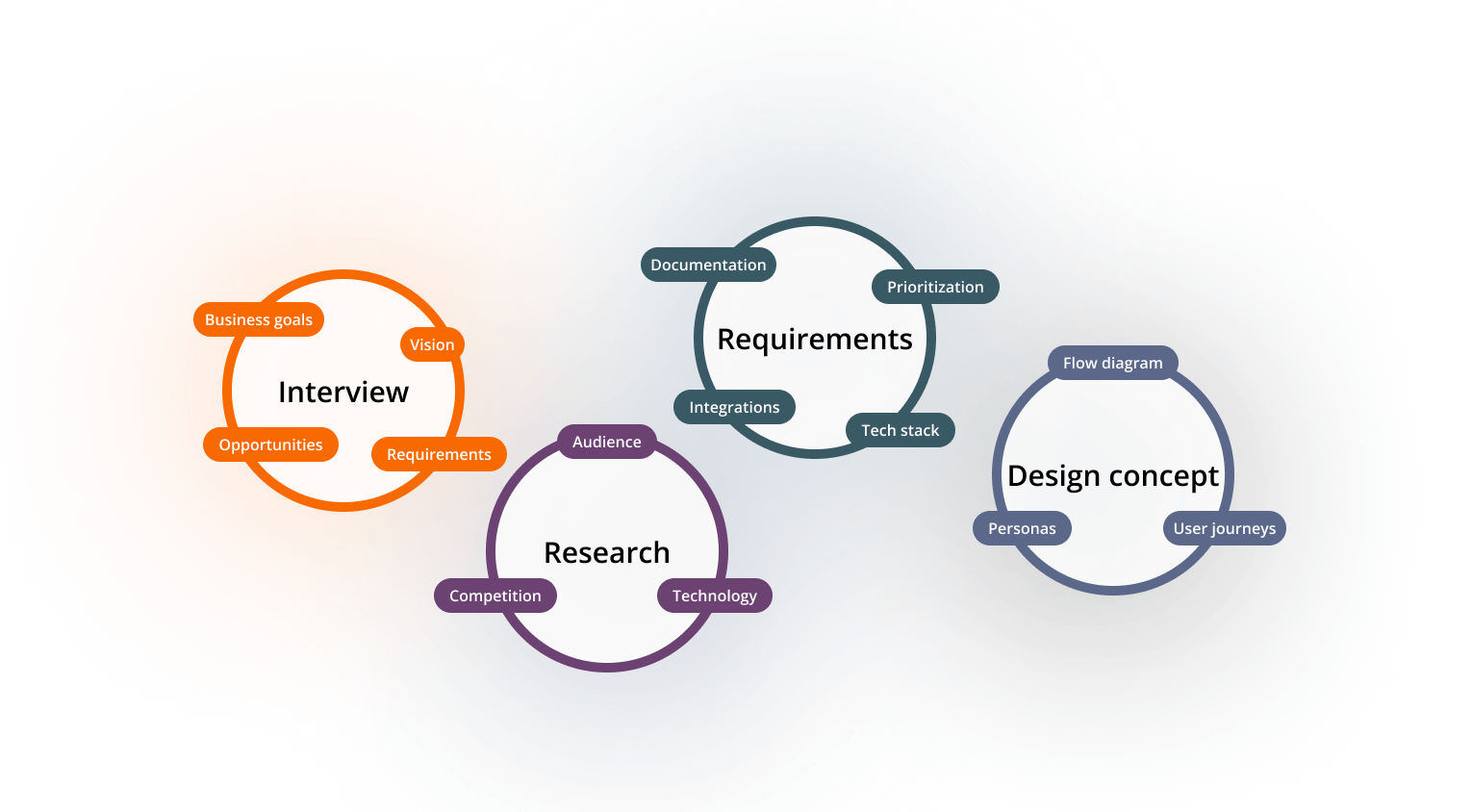
Key milestones of the discovery project.
And one more thing. Often, even the most profound research may leave some blanks. For example, if you are developing SaaS applications that have no analogs in the market. Or when you have a vague idea of who may benefit from your solution the most.
This is exactly the case for building a SaaS MVP as early and cost-effectively as possible. So you can test your idea in the field and gather information about your audience and market and then build your strategy based on this data. Remember, Dropbox started as an explainer video with a demo, and Buffer MVP was only a two-page website with a questionnaire.
Design
Design is the most satisfying stage of SaaS app development because it gives you the first glimpse of your software. As with any other software development project, the UX/UI design process starts with research, consists of several steps, and ends with essential deliverables.
User personas and journeys
User personas represent different groups of users with similar characteristics (demographics, behaviors, goals, motivations, pain points, habits, skills, etc.). Each persona has a set of scenarios of how they may use your SaaS. These scenarios combine into a user journey that maps out the interactions and touchpoints and gives a holistic view of the SaaS user experience.
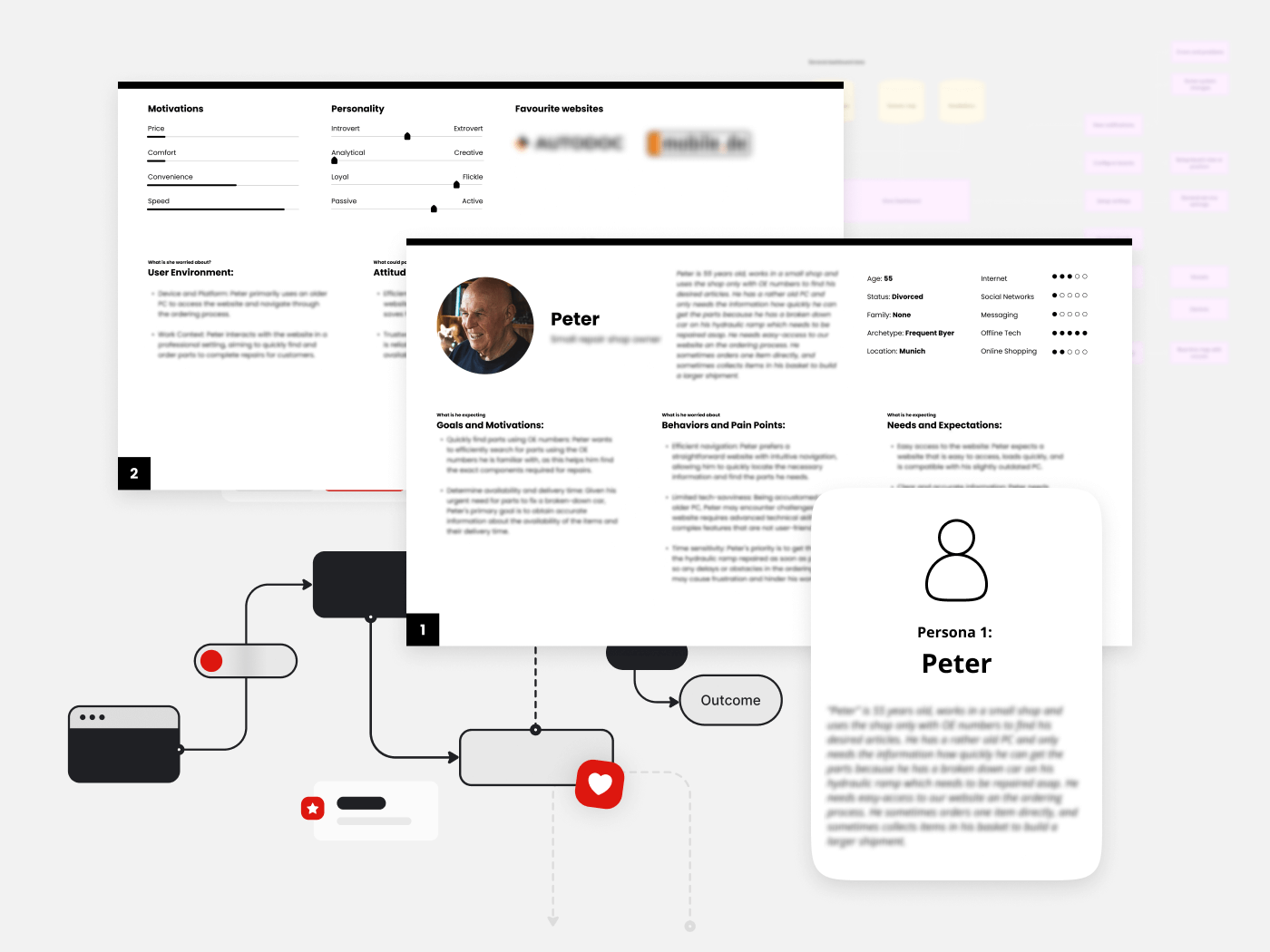
Wireframes and prototypes
Wireframing and prototyping support an iterative design approach. These techniques allow to quickly and cost-effectively test design ideas and create the first version of SaaS application design without essential UI elements like color, content, and typography.
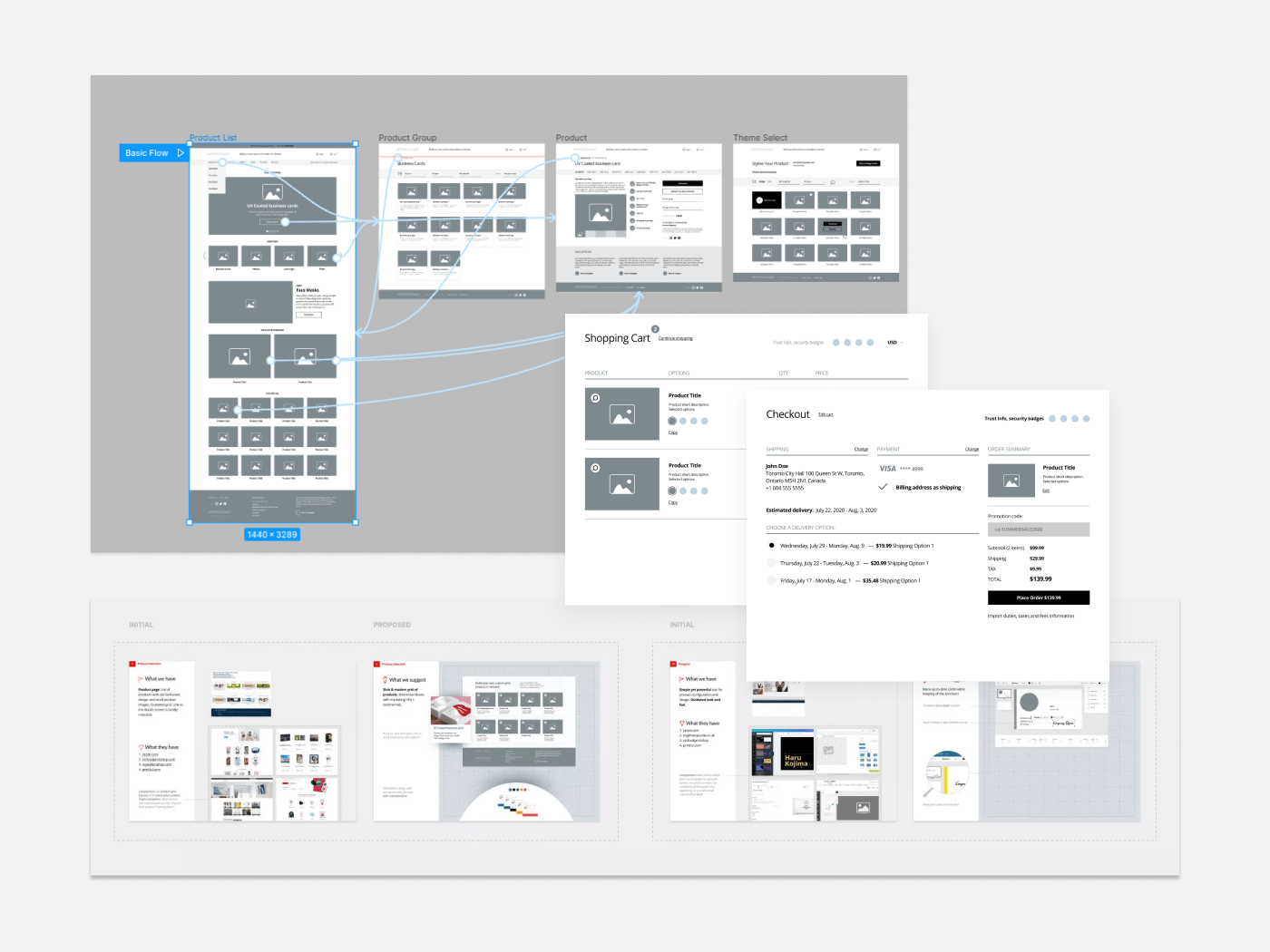
Visual design and design system
The final step of the design process is the development of visual design, finalizing UI components, and creating a design system. A design system is a suite of reusable components, tools, responsive guidelines, and assets that you can refer to to create consistent design and user experience as your SaaS grows.

By the end of this stage, you will have a complete design kit showing every screen and every interaction in your application along with responsive views for various screen sizes.
Design is an important milestone in the SaaS development process. Intuitive delightful design engages users and contributes to effortless onboarding, simplifies customer acquisition, and ensures a high retention rate. If you want to dig deeper into this topic, you can also check the best practices of SaaS design.
Development
By now, you probably already have an in-house development team or, in case you decide to outsource your SaaS development, a tech partner, or several shortlisted development companies you consider working with. Usually, you will start with a small cross-functional team (PM/Scrum Master, UX/UI designer, frontend and backend engineers, QA, DevOps, etc.) and then expand as your SaaS grows.
Development is the longest, most costly part of creating a SaaS. However, several principles of the effective development process will help you build a SaaS application while staying on budget and meeting your delivery goals.
Opt for Agile approach
Agile methodology refers to breaking down the scope into smaller parts and developing software iteratively, sprint by sprint (2-4 weeks). It provides flexibility, a quick feedback cycle, and complete transparency. So you know exactly what your team is building right now, can effectively manage changing requirements, and adjust on the go. A typical sprint looks like this:

Agile also helps you roll out your product to the market faster and gradually build up features and add new modules. Another benefit of this approach is reduced risks. It gives you better control over your day-to-day spending allowing you to cut the scope if you see that you may go over your budget.
Prioritise features
Strategic product features prioritization will help you build a stable first version of your SaaS with just the right set of functions to hit the market and impress your target audience. Without spending time and money on features that no one may ever use or need.
Test early on
Introduce QA early on to identify and solve issues before they turn into a real problem. The cost of fixing bugs and solving incompatibilities grows as you move on with the software development cycle. So starting testing early will help you not only create a SaaS application of better quality but also improve your development process and reduce costs.
Create revenue-generating SaaS
We will help you get your SaaS out the door and beat competitors without inflating your development budget.
SHOW SAAS SERVICESDeployment
SaaS is an ever-evolving product that requires modern deployment practices to provide reliable, stable, and scalable releases. Setting up these practices early on in the development process will help you create an effective SaaS software development lifecycle, speed up deliveries, and get control over cloud and infrastructure costs.
- CI/CD pipelines automate the process of releasing updates and adding new features without downtime and service interruptions.
- Infrastructure monitoring and resource tracking help keep tabs on the use of cloud computing and data services and discover ways to optimize spending.
- DevOps specialists oversee and ensure faultless releases, manage infrastructure, and enable seamless scalability and quick response to possible issues.
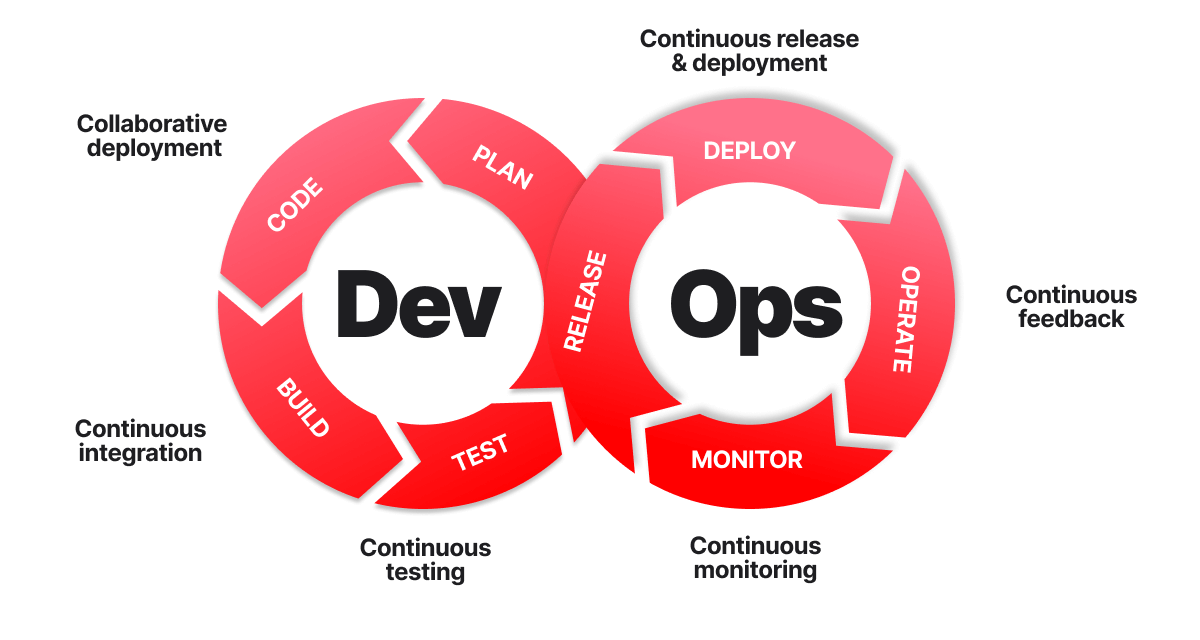
Support and scale-up
You have an effective development and deployment process set up and successfully release the first stable version of your SaaS to the market. But to develop a SaaS application is one thing. The next stage of your journey involves continuous support, gathering market feedback and usage analytics, and optimizing infrastructure and performance to provide a seamless experience as your user base grows.
The data you get from the market will help you understand which direction to steer your product. As your SaaS moves from getting initial market traction to scale, you will continuously improve your product — add new functionality and strategic integrations to enable sustained growth, stay competitive, and increase customer lifetime value.
Control and manage cloud costs
The majority of cloud-based businesses struggle to manage their infrastructure costs and report more than 30% of their cloud investment wasted. Cloud cost control is an acute problem in custom SaaS development and one of the biggest challenges, according to 42% of CTOs and CIOs. Overprovisioning, lack of a realistic scalability strategy, and poor visibility into cloud spending and resource usage are some of the major reasons why much of the cloud budget goes to waste.
Your goal is to find the right cloud solutions and infrastructure setup that matches your workload and can seamlessly scale as your SaaS grows. DevOps and infrastructure monitoring practices will help you get visibility into the cloud spending, spot and eliminate redundancies, and optimize the use of resources.
Example: When working on a data-heavy Azure-based platform for Oxford University Press, we set up DevOps to monitor and manage platform performance and resource costs. During routine monitoring, the team found a drastic leap in Cosmos DB resource usage that could potentially increase OUP’s cloud spending nearly 60 times. DevOps team investigated the incident, identified an issue on the provider’s side, and resolved the problem, saving OUP up to £100,000 in cloud costs. Read the full success story…
Speed up time to market
Speed is a deciding factor for many SaaS products. On average, it takes 3 to 6 months to develop and launch the MVP version of a SaaS application depending on complexity, goals, and available resources.
But not every project starts with ‘mise en place’. Often you have to hit the ground running, put together a team and make decisions on the go. This affects your delivery timeline and may drag the launch putting at risk your chances of being the first in the market.
How to develop a SaaS application and meet your launch goal if you have limited resources?
One solution to this problem is partnering with a tech company that can bring in skilled engineering talent faster and more cost-effectively than you would hire in-house. And then ramp up or down the team as your requirements change. Having access to scalable development resources and diverse expertise on demand will give you flexibility and space to focus on the business side of your SaaS.
Example: Diaceutics, a leading UK diagnostic data analytics company, had a goal to develop and launch SaaS for precision medicine in less than a year. They were still in the process of finalizing the architecture and gathering resources when they decided to partner with tech providers to get experienced engineers faster, and at a much lower cost. We joined forces with Diaceutics and put together a cross-functional team of software engineers, QA, DevOps, and data engineers within weeks, eventually surpassing the original deadline and building a functional solution in a record 8 months. Read the full success story…
“Digiteum was key to helping us achieve success at a reasonable cost and at a high level of quality.” Ryan Keeling, CEO, Diaceutics.
SaaS is a complex cloud-based system that requires significant original funding to get it up and running and continuous investment to keep it afloat. The cost of SaaS MVP varies between $50k to $150k depending on your market, resources, integration strategy, and myriad other factors. Here are some of the major ones that will determine how much it will cost you to create your own SaaS.
- Tech stack. Tech stack will directly impact the composition of your team and salary ranges. For example, hiring specialists in technologies like Python, Go, or Scala will cost more than hiring PHP developers (source: Stack Overflow, 2023).
- Cloud services. The choice of a hosting strategy, cloud provider, pricing model (usually, it’s pay-as-you-go), support plans, and tier types will affect the overall cost of your SaaS project.
- Architecture. Traditional monolithic architecture is a time and cost-effective solution for building small applications. However, microservices approach, despite higher upfront costs, provides better flexibility and cost-effective scalability in the long run.
- Integration strategy. Leveraging third-party services and integrations for standard tasks (payment modules, shipping tracking, etc.) can help you reduce development costs and focus your budget on the development of your core SaaS components.
- Development strategy. Whether you decide to build the whole SaaS application with your in-house team, augment your team with remote specialists, or outsource the development to a dedicated team will significantly impact the cost of your project. Outsourcing to proven nearshoring or offshoring locations that offer lower hourly rates can save you up to 30% on development costs without losing quality.
Get an accurate estimate for your SaaS
Remove guesswork and risks from your SaaS project with a precise estimate and detailed workload breakdown.
GET SAAS ESTIMATEWe can help you design, develop, and scale your SaaS while keeping a laser focus on your budget, timeline, and business goals. As a seasoned tech company with over 14 years in custom software development, we contribute to the success of innovative and industry-leading SaaS, including award-winning Diaceutics, Lodgify, Mercans, feed.fm, Applixure, and many more. And we can help you with:
- End-to-end SaaS application development from discovery to launch to scale-up.
- Building a dedicated development team for any stage of your project.
- Scaling your tech team with senior professionals in design, frontend, backend, cloud, DevOps, QA, and delivery. Faster and more cost-effectively than you would hire in-house.
- Migrating to or adopting new technologies to future-proof your product and your business (.NET, Java, Angular, React, Python, Node.js, Amazon Web Services, Google Cloud, Microsoft Azure, etc.)
- Migrating from a monolith into high-performing scalable microservices SaaS without risking the integrity of your solution and continuity of your services.
Quick wrap-up
- SaaS development is a complex project that requires the effort of a cross-functional team and significant upfront costs.
- Profound research, strategic feature prioritisation and integration strategy, and agile approach contribute to the success of a SaaS project enabling flexibility, fast time to market, and budget control.
- Partnering with a reliable tech provider helps promising and mature SaaS companies alike quickly scale their teams, close expertise gaps, and hit their delivery goals.


